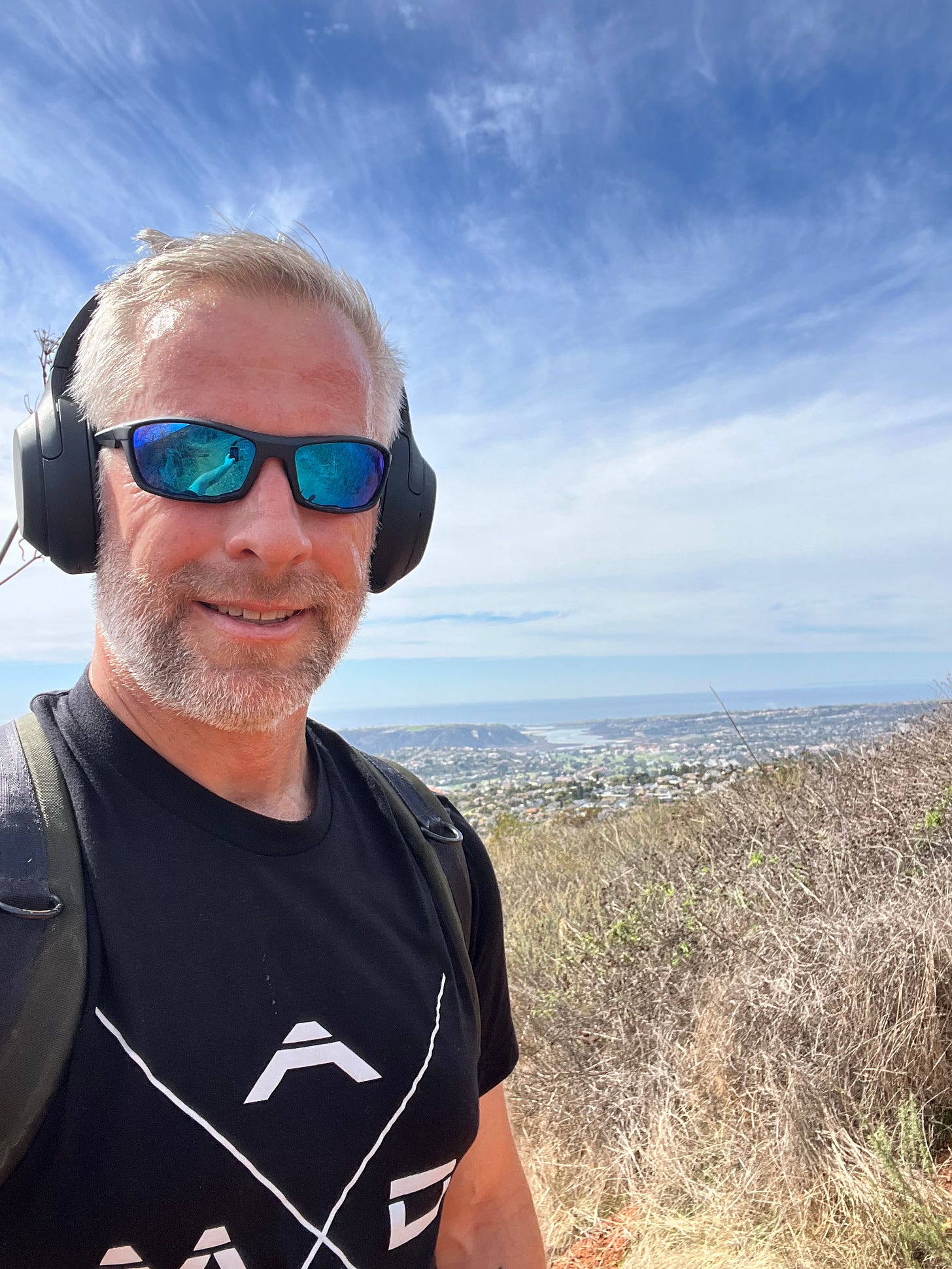Ruck to Get Fit
Want to get your heart-rate up without smashing your body? Carrying a pack adds intensity to a hike; it's a great way to increase the work-rate and caloric burn with minimal stress on your body.
WOW - this community is now at 1000+ followers, thank you to everyone who sees value in the information provided. To celebrate the growth, here is an extra piece to help you identify a new workout that you should consider adding to your routine: rucking.

Rucking - A High-Intensity Workout for Aging Bodies
High-intensity workouts like boot camps and CrossFit (and workouts inspired by the methodology) were all the rage in the 2000s and early 2010s, and for good reason. They burn tons of calories and stimulate the release of muscle-building hormones like growth hormone and testosterone.
CrossFit became popular in the mid-00s when Millennials were hitting the gym scene in their early 20s. Now, as many of the early adopters of high-intensity exercise have aged into their late 30s and early 40s, there’s been a shift in priorities. Fitness enthusiasts still want the results from hard exercise, but without the pain, stress, and injury risk. That’s why more fitness enthusiasts are discovering rucking: a low-tech, high-benefit workout that’s as simple as walking with a weighted backpack.
What Is Rucking?
Rucking is walking while carrying a load, typically a weighted backpack or vest. It originated in military training, where soldiers routinely hike long distances with their gear. But today, it’s catching on with everyday fitness enthusiasts who want an effective workout that doesn’t beat up their bodies.
Rucking blends the cardiovascular benefits of brisk walking with the strength-building challenge of carrying weight. It’s accessible, inexpensive, and can be done just about anywhere. All you need is comfortable shoes, a sturdy backpack with some weight inside (water jugs or sandbags work great), and a place to walk.
Why Rucking Works
Rucking turns a simple walk into a total-body workout. The added load forces your core, hips, and legs to work harder, increasing strength and endurance. Plus, walking with weight elevates your heart rate more than regular walking, so you burn more calories without having to run or jump.
Compared to other forms of cardio, rucking is surprisingly efficient. According to metabolic data, walking uphill with 20 pounds can burn up to 9.6 calories per minute, similar to a vigorous indoor cycling class or circuit training session. And because rucking is low-impact, it’s gentler on the joints, making it ideal for those who want a tough workout without the pounding (exactly why I switched from trail running to rucking).
The Benefits Go Beyond Fitness
Rucking isn’t just about getting in shape, it’s also a social and mental boost. Many people ruck in groups or participate in rucking events, making it a fun and motivating way to meet others and stay consistent. The shared experience of walking with a weighted pack fosters camaraderie and accountability, two powerful drivers of long-term fitness success.
Our visual sensory receptors were NOT built for looking at screens under fluorescent lighting; the scenery from exercising in nature is one way to boost visual acuity and strengthen your eyes. Plus, enjoying beautiful scenery, like the view from this hike in Rancho La Puerta (below) is much more enjoyable than staring at the person sweating in front of you on another treadmill.
How to Start Rucking
Starting a rucking routine is easy. Begin with a light load, around 8 to 10 pounds for those under 150 pounds, and up to 20 pounds for heavier or more experienced individuals. A backpack works just fine, or you can invest in a weighted vest designed for comfort and stability.
Sacramento-based trainer Robert Linkul, who trains older adults, recommends a simple starting plan: walk 10 minutes out, then turn around and walk back. Start with 20-minute sessions a few times per week, then gradually increase the duration and weight.
Strength training can complement rucking well. Exercises that build core and leg strength, like lunges, step-ups, and weighted carries, can help your body handle the load more efficiently. Focus on high-rep sets (12–20 reps) to build endurance and support longer rucks.
Final Thoughts
Rucking is one of the most accessible and effective workouts you can do to improve strength, burn calories, and build cardiovascular endurance—all without putting excessive stress on your body. Whether you’re looking for a new challenge, trying to stay fit as you age, or simply want to enjoy the outdoors while getting healthier, rucking is a smart, simple choice.
Grab a backpack, load it up, and hit the road, your body (and your joints) will thank you.
Vest or Backpack - my thoughts
I am often asked if a backpack or weighted vest is better for rucking. Personally, I like a backpack because it is more versatile. For running, a weighted vest is better - it stays closer to the body and is more comfortable than a pack bouncing on your back; but for hiking, I prefer a backpack because it is more versatile and it allows you to bring things like extra water and a camera whereas a vest does not allow for that option.





